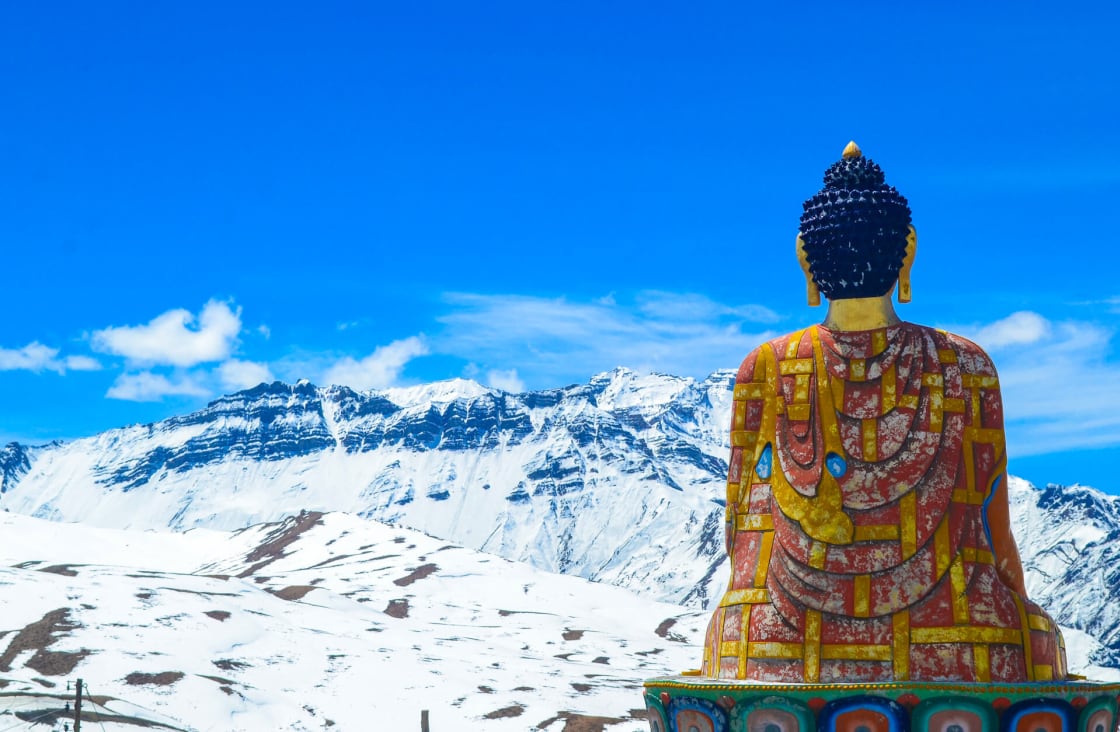
From the majestic peaks of the Himalayas to the saturated backwaters of Kerala to the parched deserts of Rajasthan and Gujarat, India tours cover an astonishing diversity of terrain, and the weather is extremely varied across the different states throughout the year, making the best time to visit India quite a conundrum. Thankfully our experts are on hand to help.
The most significant aspect of India’s climate is the monsoon, which arrives on the Keralan coast at the end of May, before working its way northeast across the country over the next few weeks. During the monsoon season India, regular and prolonged downpours are interspersed with hot sunshine, and the pervasive humidity is intense. At the height of the monsoon – especially in the jungle regions of the northwest and the low-lying delta lands of Bengal – flooding can severely disrupt communications, and in the Himalayan foothills, landslides are common, and entire valleys can be cut off for weeks.
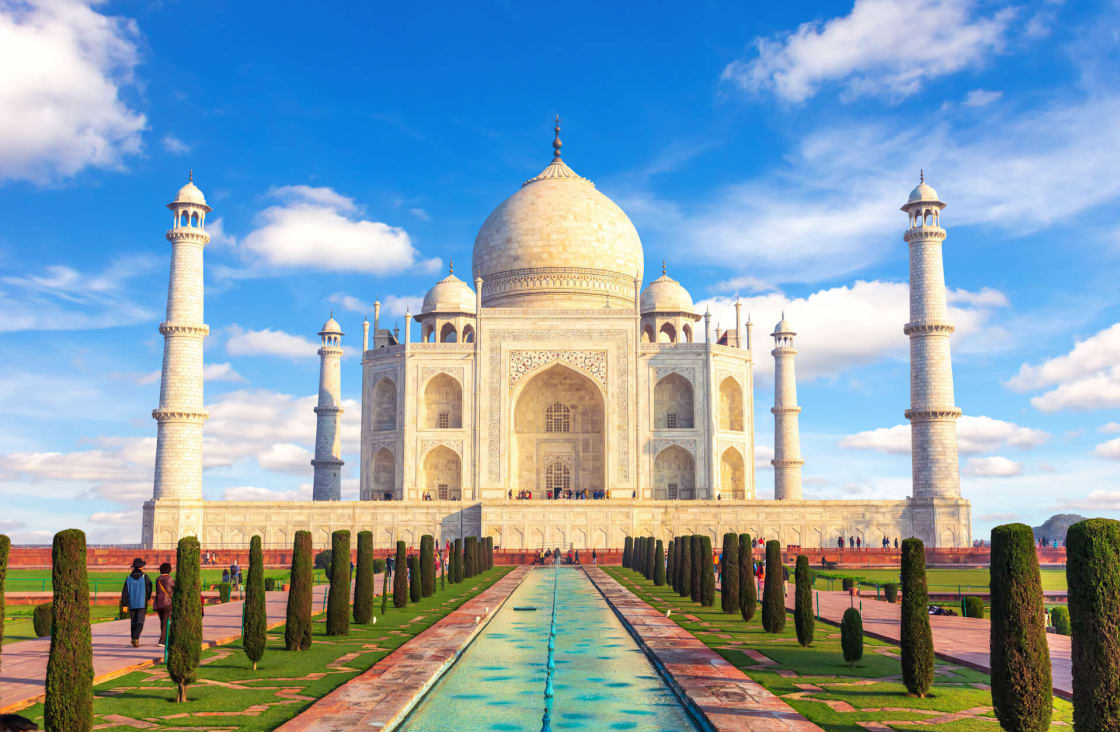
The Taj Mahal in Agra is best and most commonly visited during the cooler, dry season.
Generally, the best time to visit India is during the cool, dry season, between November and March, especially the cities, temples, palaces and forts of the plains: Delhi, Agra, Varanasi, Rajasthan and Madhya Pradesh. Temperatures in Goa and central India also remain comfortable at this time of year. The heat of the south is always intense but becomes stifling in May and June. Aim to be in Tamil Nadu and Kerala between January and March.
If you visit in low season (April–June), you will avoid the crowds and have the temples to yourself, and must-see sights such as the Taj Mahal will be a less frenzied experience, but this time of year sees temperatures rising to almost intolerable levels. By May, most of the country feels like a furnace so it’s better to head to the hill stations or stay on the coast but note that many beachside hotels in Goa are closed from May to September.
From March onwards, the Himalayas become more accessible for hikers, and June–November is the best time to go, backpackers and trekkers pour into the mountains, filling Ladakh’s lodges, tented camps, and yoga retreats. This is the prime time for treks on India’s highest mountain trails. By September, the monsoon has generally retreated from the north and tourism picks up. The last public bus services heading downhill from Ladakh to Manali end in late September. The east coast of Andhra Pradesh and Tamil Nadu, and the south of Kerala, get a second drenching between October and December, when the receding monsoon sweeps in from the Bay of Bengal. By December, however, most of the country is blessed with clear skies and relatively cool temperatures.
Now let’s take a look at the weather and Indian festivals by month to help you better choose the best time to go to India for your vacation.
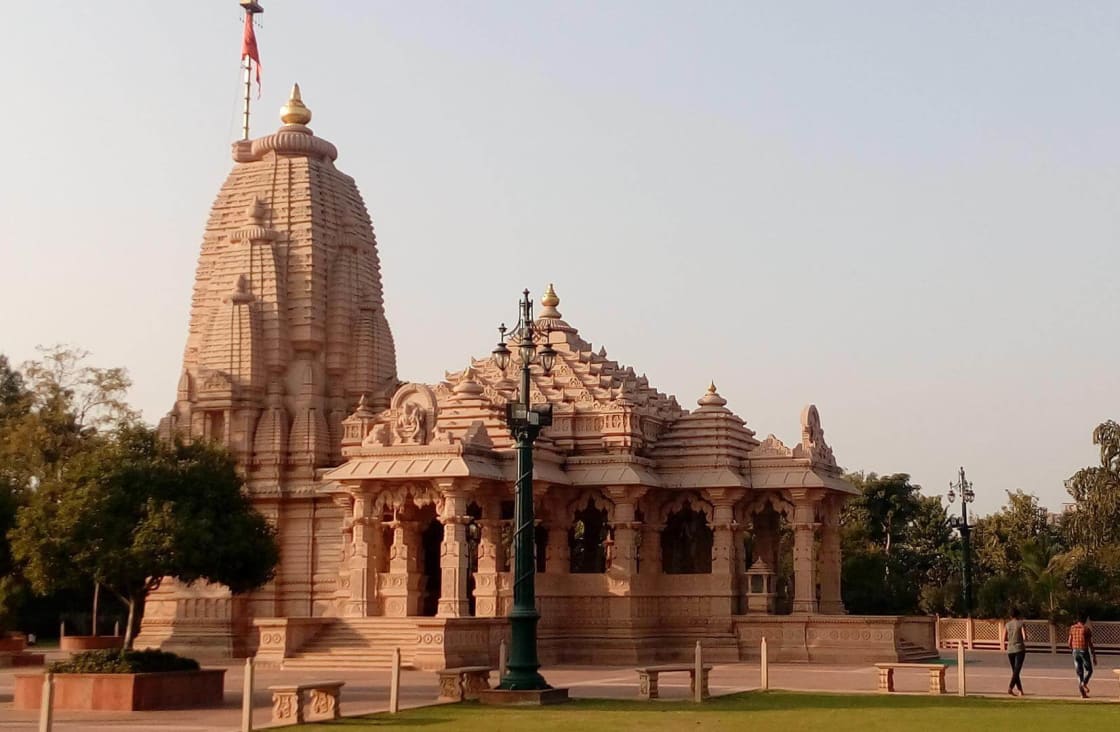
Gujarat, synonymous with Hindu mythology and famed for its temples is great to visit in January.
With sunny days and dry weather, January is one of the best months to visit India, with daytime highs in Mumbai, Gujarat, and Rajasthan, around the mid-80s. The Golden Triangle region is chilly during evenings and early mornings. The mountains of Himachal Pradesh, and Kashmir receive snow during this time of the year. It’s busy almost everywhere though, with hotel rates at their peak, so be sure to book ahead. Delhi puts on a lavish display for Republic Day on January 26, while the Hindu festival of Sankranti is celebrated in different ways from lavishly decorated cows in South India to mass kite-flying in Gujarat.

The Taj Mahal is great to visit at the turn of the year, even better in February to coincide with the Taj Mahotsav carnival.
The mountains are cold but the rest of the country is basking under a warm sun. It’s still peak travel season, but you can sunbathe in the south and go trekking and skiing in the north at mountain resorts in Kashmir, Himachal Pradesh, and Uttarakhand. A bonus for those visiting the Taj Mahal in February is ‘Taj Mahotsav’, a 10-day carnival of culture, cuisine, and crafts featuring artisans from all over India.
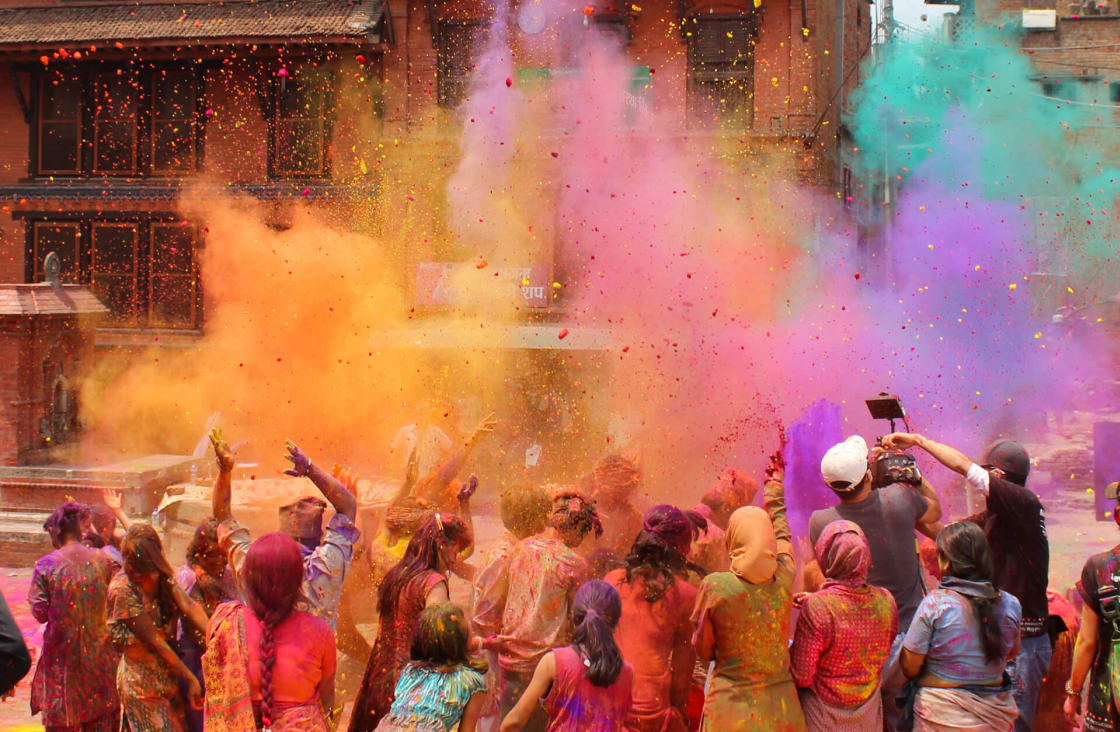
The colorful celebrations of the Holi festival take place in March.
In March, it starts to get hot across India with temperatures touching 90°F. It’s a great time to visit the Himalayan states as spring flowers bloom across the valleys. If you’re in India during the Holi festival in March, you will experience an amazing atmosphere of fun, celebration and bright colors. March is also regarded as being the prime time of the year to explore the wildlife parks of central India, such as Ranthambore and Kanha. Many Tibetan Buddhist monasteries in the north hold masked dances for Losar, the Tibetan New Year.

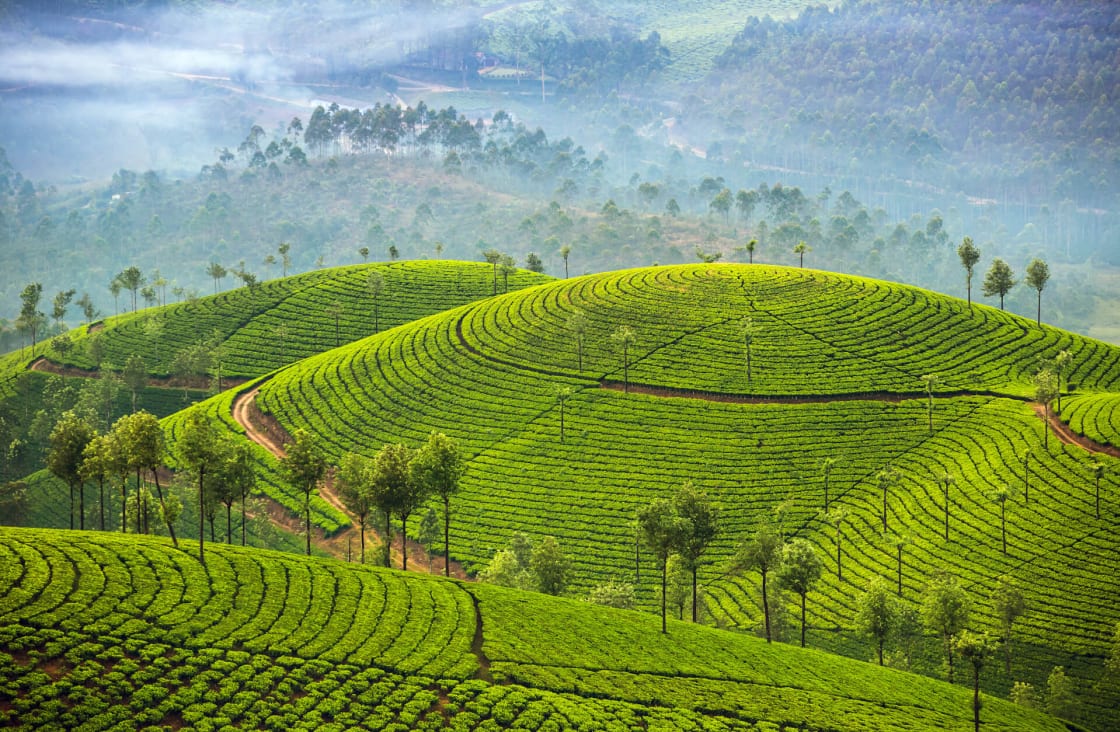
Darjeeling is famed for its tea plantations, hill stations and alluring vistas of the surrounding Kanchenjunga mountain range.
Soaring temperatures across the country make hill stations an attractive destination. It’s prime wildlife viewing season as hot temperatures and dry weather drives animals to watering holes in search of water. Humidity levels are also on the rise making sightseeing challenging. However, you can get good deals on accommodations and avoid the peak season crowds at popular sights. The northeast is wet, but it’s peak season for visiting Sikkim and the highland areas of West Bengal, including Darjeeling. Rama Navami is a big date as Hindus celebrate Rama’s birth with processions and enactments of scenes from the Ramayana.
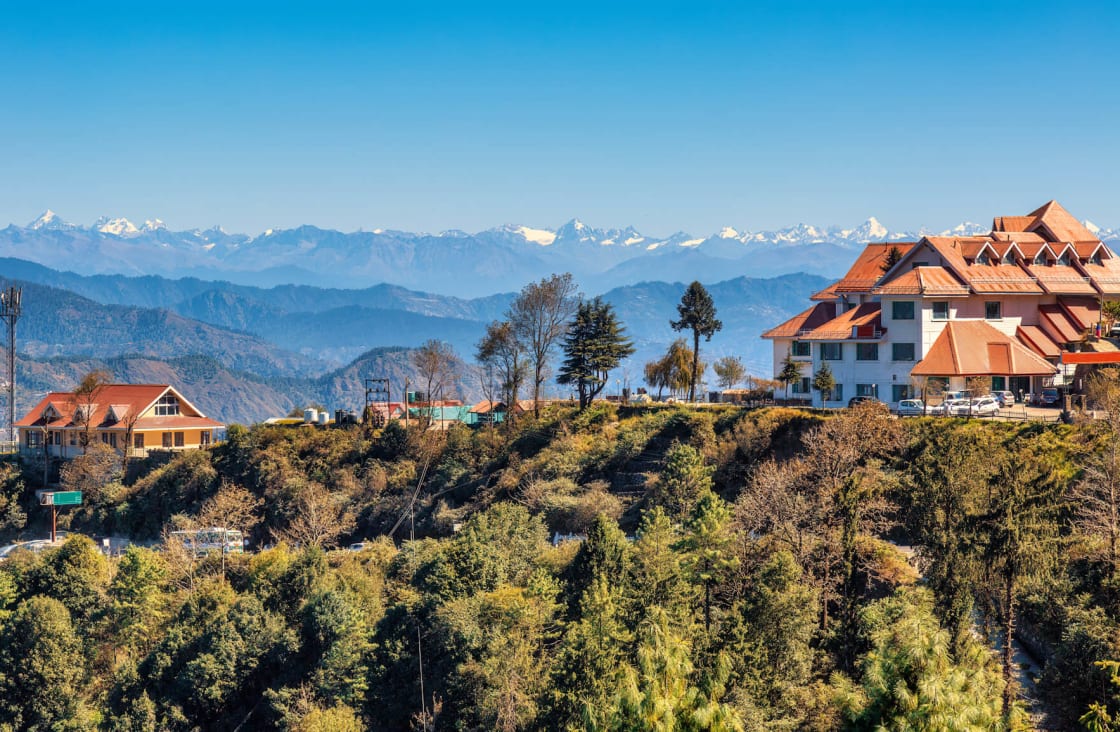
Head to Himachal Pradesh in May for cooler temperatures and its marvelous Himalaya mountain landscape.
May is hot and sultry across most of India. The only exceptions are the states in the far north which include Uttarakhand and Himachal Pradesh and the hill stations. Daytime highs in the Golden Triangle and Kolkata often exceed 100°F. In the mountains, however, the pre-monsoon trekking season is in full swing. The Buddha’s birthday is celebrated in Bodhgaya and Tibetan Buddhist areas.
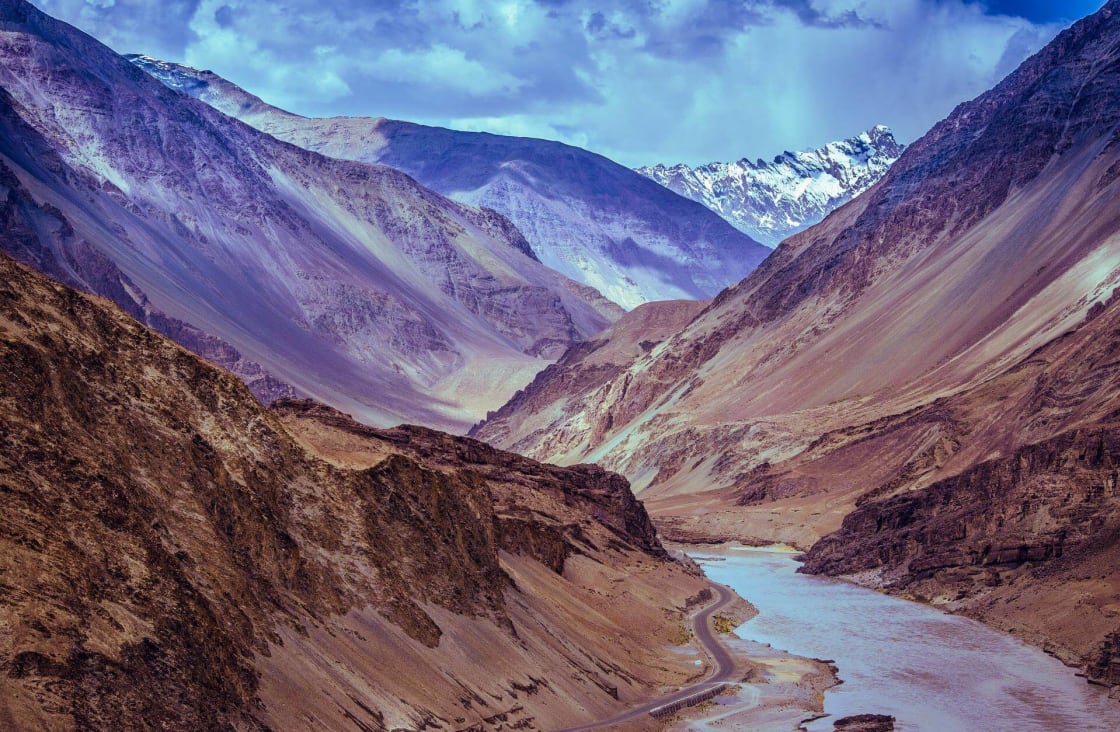
Wedged between Pakistan, Tibet and China’s Xinjiang Province, Ladakh – the ‘Land of the High Passes’ – is among the most stunning parts of the Indian Himalayas.
Heat and humidity levels are high in West Bengal, Rajasthan, and the Golden Triangle region. Thunderstorms become more frequent as the monsoons start to move in. Many national parks close and hill station views disappear into the clouds. In the high Himalayas, the mountain passes open and travelers head to Ladakh, which enjoys dry and sunny days.
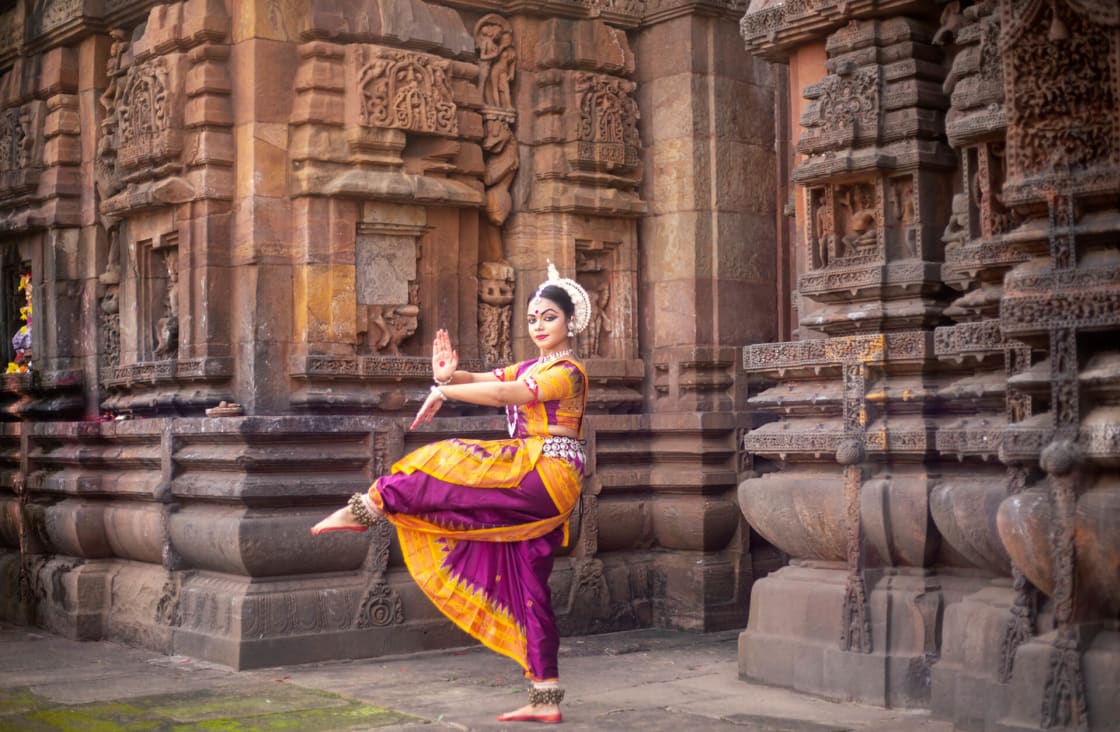
A classical Odissi dancer strikes a pose at Bhubaneswar’s Brahmesvara Temple, one of many famous heritage sites found in Odisha.
The monsoon brings torrential rains across most of the country, and flooding and landslides can cause problems in many regions. In Ladakh, you’ll find dry days, perfect for mountain hikes. Held in June or July, Rath Yatra, the Hindu Chariot Festival, sees effigies of Lord Jagannath paraded through the streets on vast, colorful chariots, most famously in Puri in Odisha (formerly Orissa).

The temple town of Aranmula on the banks of the Pamba River is a great spot to witness Kerala’s famous backwater boat races.
The country is right in the middle of the monsoon season and the scenery turns lush and green. Kerala’s exhilarating boat races take place on the second Sunday of August, and there are flag-hoisting ceremonies and parades in Delhi on August 15 to celebrate India’s independence from Britain in 1947.
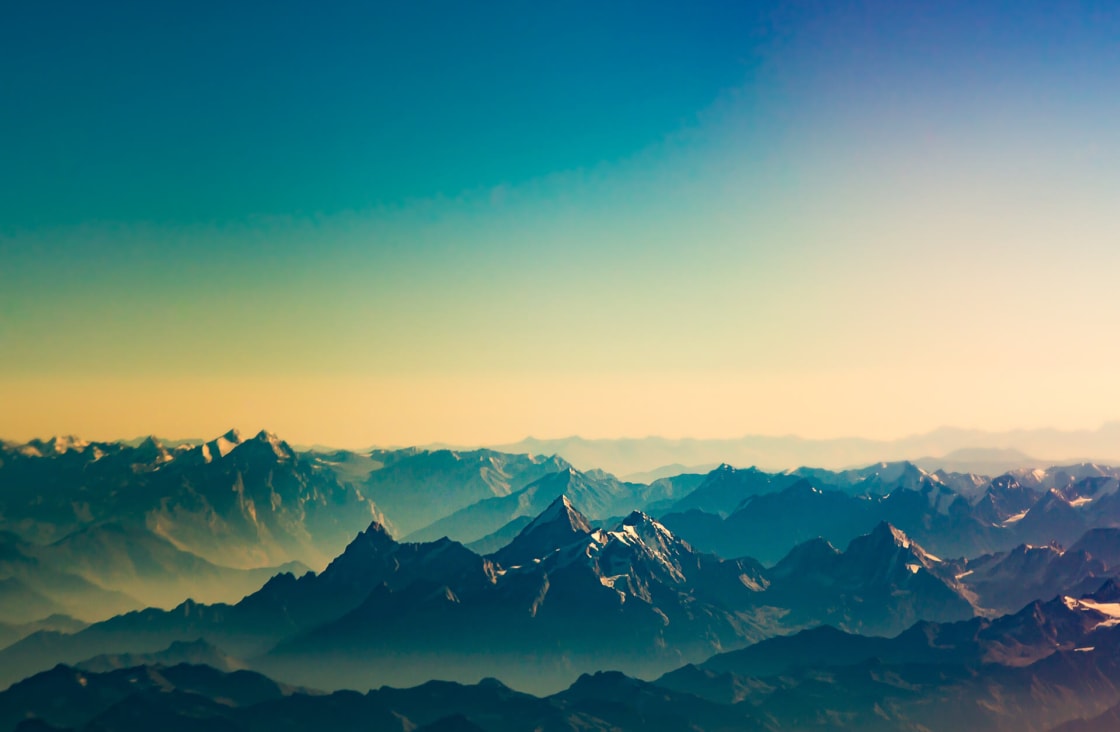
The Indian Himalayas are popular with hikers during the fall season.
September sees the end of the monsoon and in Rajasthan, the rains have completely stopped, leaving behind a lush, green scenery. The south still receives a substantial amount of rain, and the snow returns to the mountain passes of Ladakh. In other parts of the Indian Himalayas, the fall trekking season gets underway.
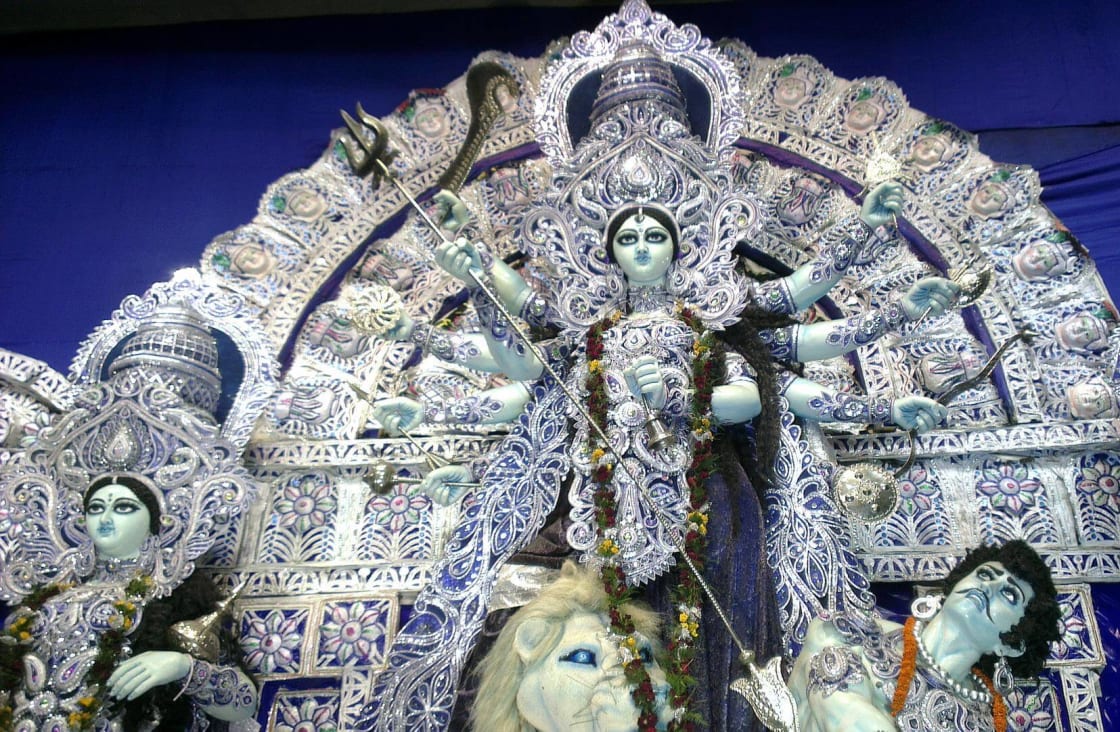
Durga Puja celebrates the victory of goddess Durga over the demon king Mahishasura, and begins on the same day as Navratri, a nine-night festival in many northern and western states celebrating shakti, the divine feminine.
October is considered the start of the tourist season with rainfall levels and temperatures dropping across the country. It is the month of festivals in India with Navratri/Durga Puja being celebrated with much pomp and splendor across the country. Rivers are full after the rains, resulting in magnificent waterfalls across the country, and thrilling river rafting in Himachal Pradesh.

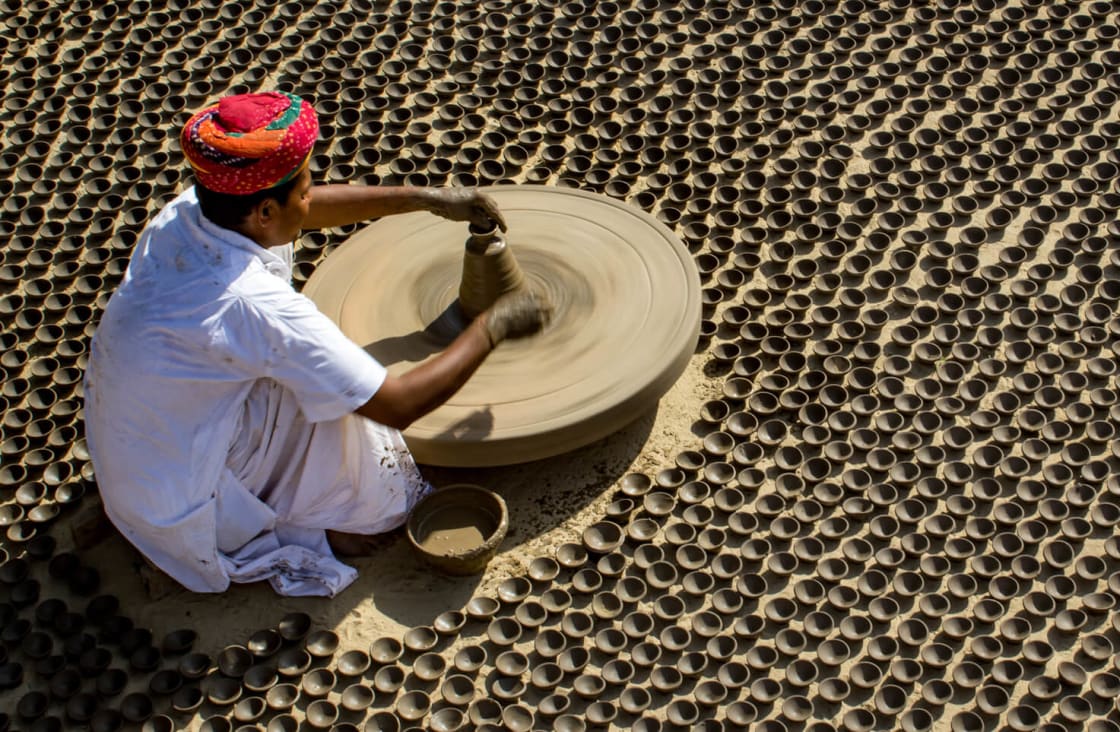
An artisan makes hundreds of clay diyas (oil lamps) to sell during the Diwali festival of lights.
Pleasant temperatures and sunny days make November a popular month to visit India. Diwali, the festival of lights, falls between mid-October and mid-November and is celebrated with a lot of enthusiasm in most parts of the country. In the south, Kerala and Tamil Nadu still receive rain. In Rajasthan, the Pushkar Camel Fair attracts thousands of people, camels, horses, and cattle. In Punjab and Haryana, Sikhs celebrate Nanak Jayanti with prayers, devotional singing, and processions.
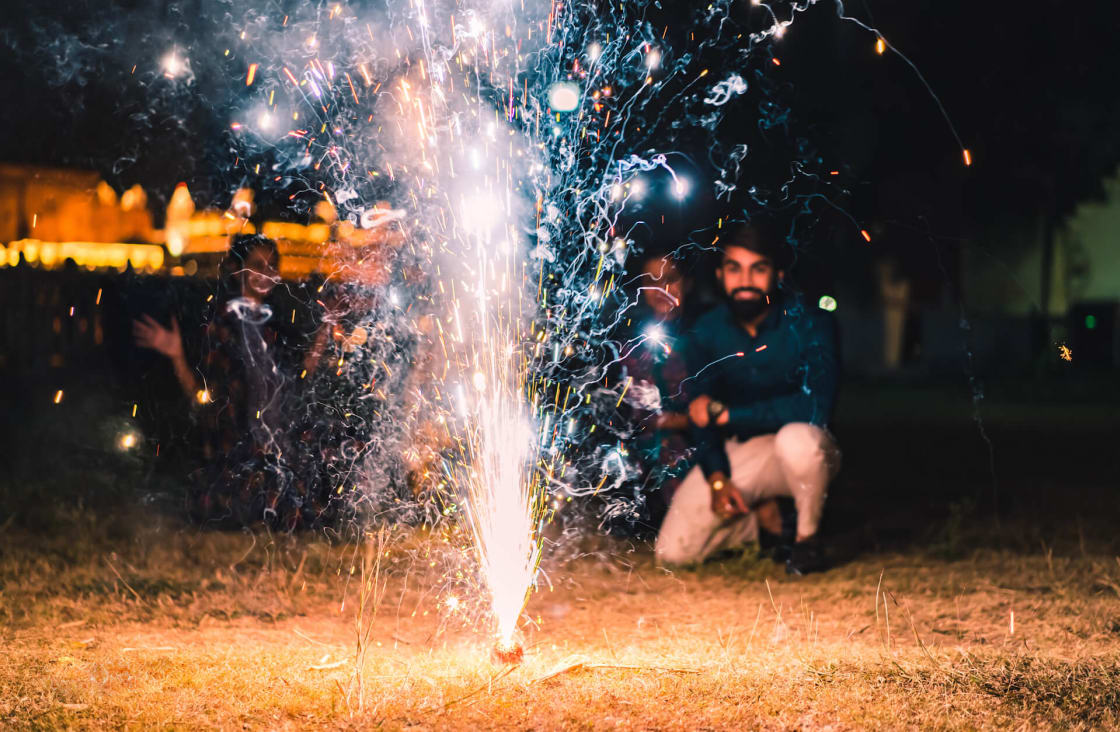
Fireworks are commonplace at Christmas in Christian Goa, parts of Kerala and the northeast.
With dry days, low humidity levels and glorious weather, except in the chilly mountains, December is one of the best months to travel to India, but be sure to book your transport and accommodations well in advance. Goa is overwhelmed by domestic tourists as well as international visitors, so you can expect to pay peak prices. Christian Goa, and parts of Kerala and the northeast, come alive in the lead-up to Christmas, and Christmas Day is celebrated with feasting and fireworks.
So, now that you are informed, when will you visit India?
While Rainforest Cruises aim to provide accurate and up-to-date information, we make no representations as to the accuracy or completeness of any information herein or found by following any link on this site. Rainforest Cruises cannot and will not accept responsibility for any omissions or inaccuracies, or for any consequences arising therefrom, including any losses, injuries, or damages resulting from the display or use of this information.




